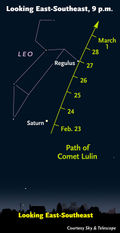Road Trip: Telluride to Chicago
 After a brief stop at home in Telluride after our visits to West Coast family, Sus and I left on the next phase of our Spring travels on Friday, 17 April. For those of you who were watching Colorado weather during that time, you know it probably wasn't the most auspicious departure date. But, ever optimistic, we left anyway.
After a brief stop at home in Telluride after our visits to West Coast family, Sus and I left on the next phase of our Spring travels on Friday, 17 April. For those of you who were watching Colorado weather during that time, you know it probably wasn't the most auspicious departure date. But, ever optimistic, we left anyway.
The webcams on Monarch Pass looked nasty, so we chose to go on I-70. That looked like a good decision until just short of Vail. With an electronic sign showing that Vail Pass was closed, we turned off at Minturn, drove in rain/snow mix for a few miles, then in heavy snow. At Leadville, we found that Fremont Pass was closed, and learned that Denver was getting hammered. We had planned to spend the night with friends in Denver- oops!, change in plan. A welcome beer (or two) and a burger at Rosie's in Leadville, then a little time to make a new plan, and time for bed.



![Fear-emai[1]](https://www.tellurideinside.com///images/old/6a00e553ed7fe18833011168cf511c970c-120wi.jpg)




